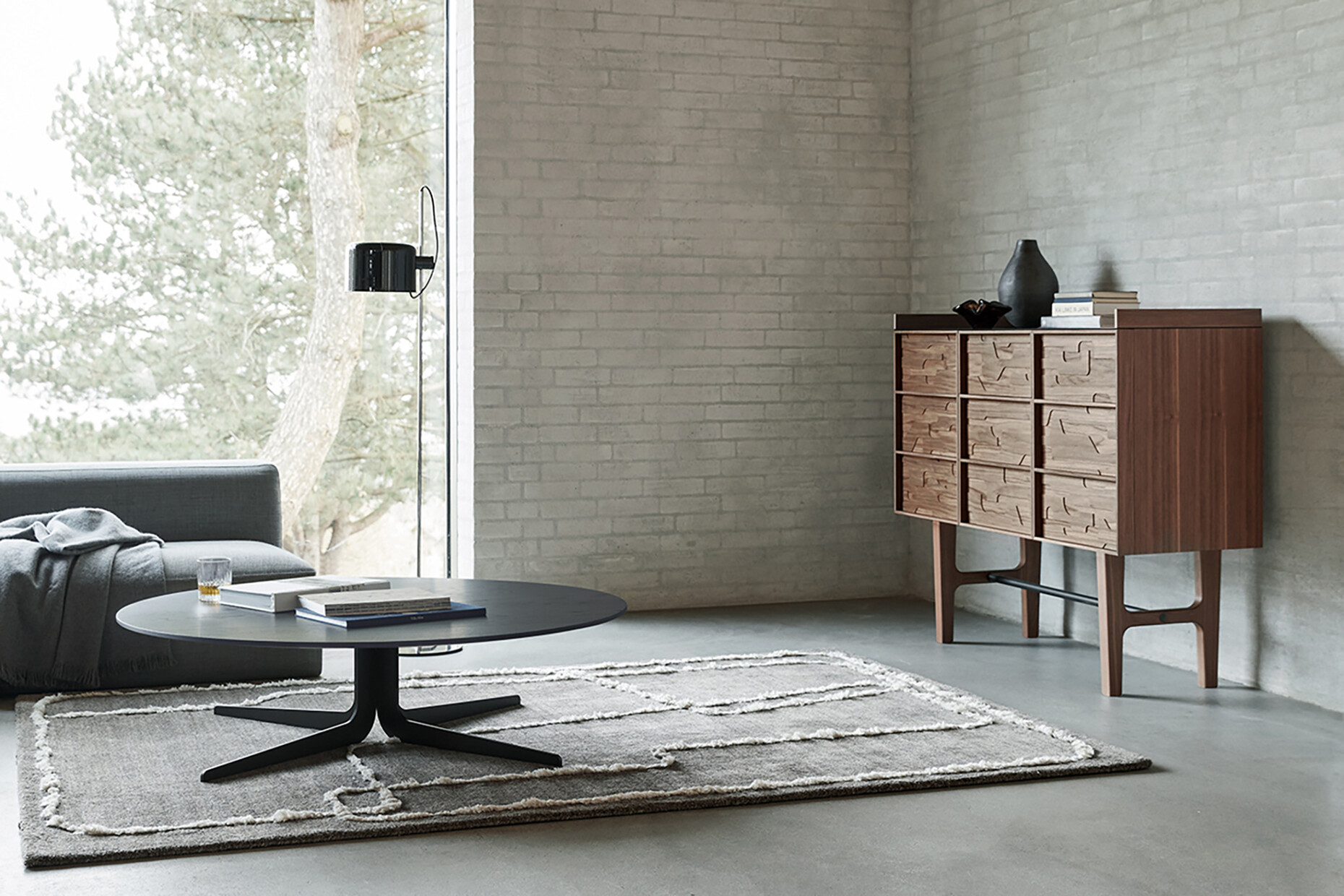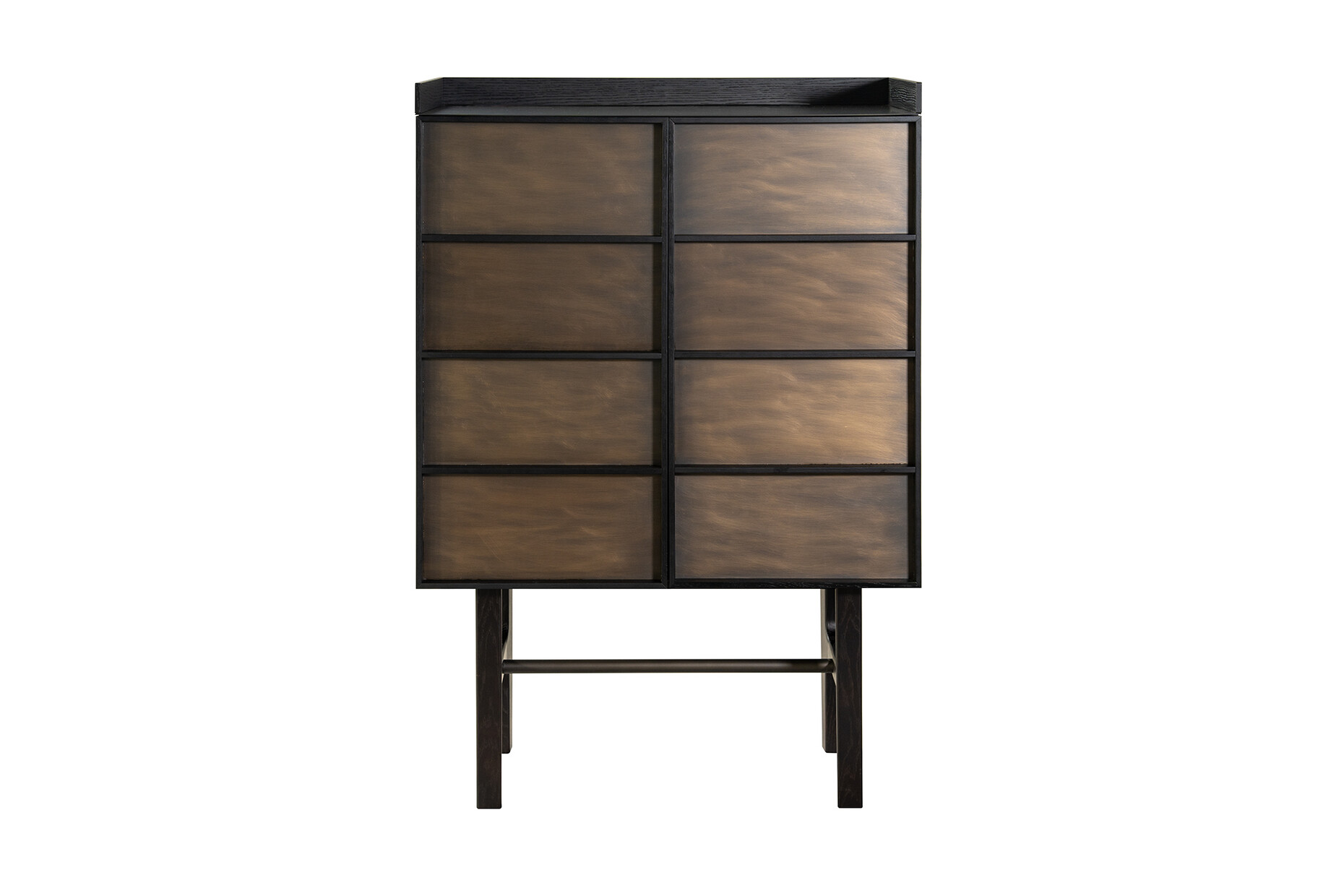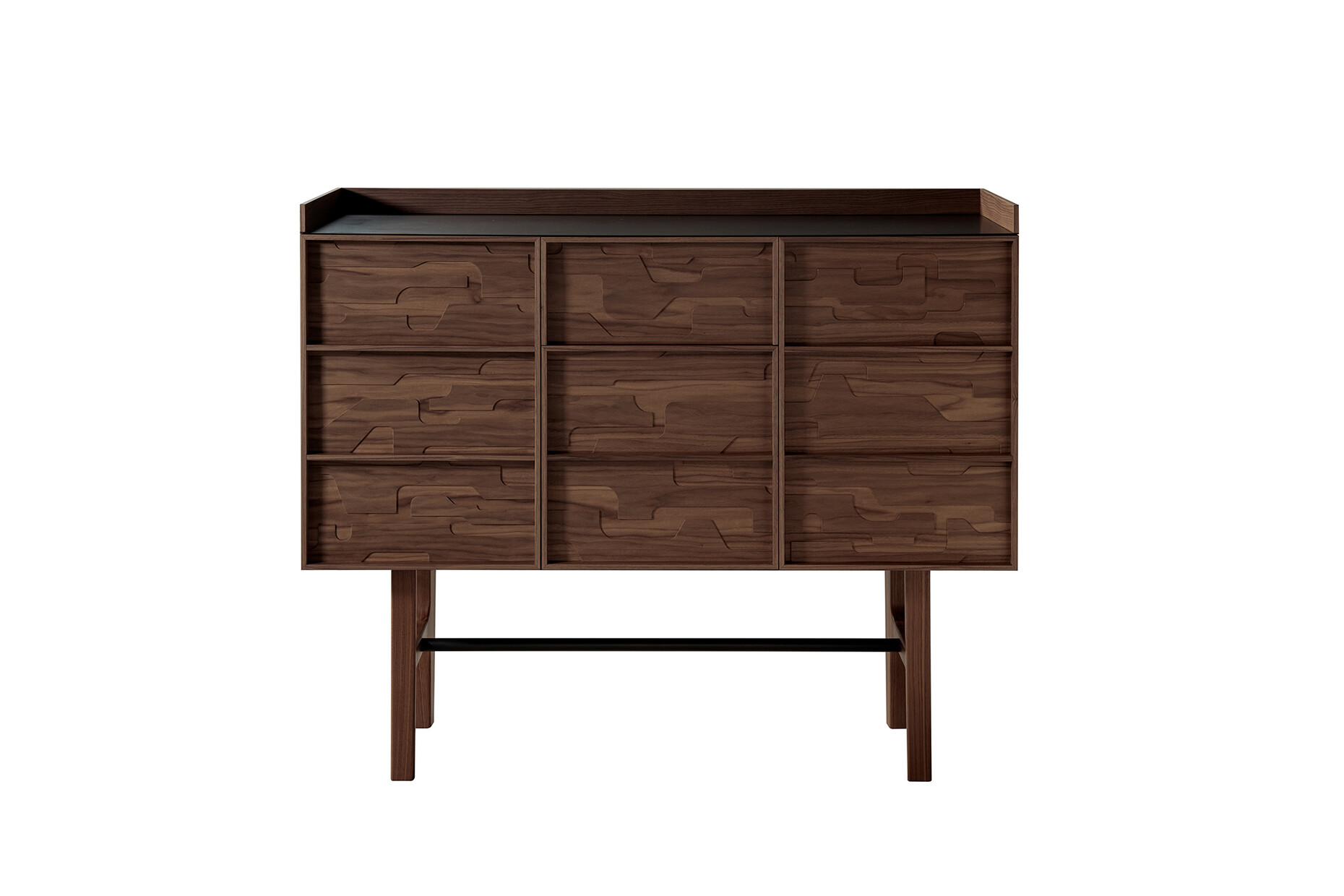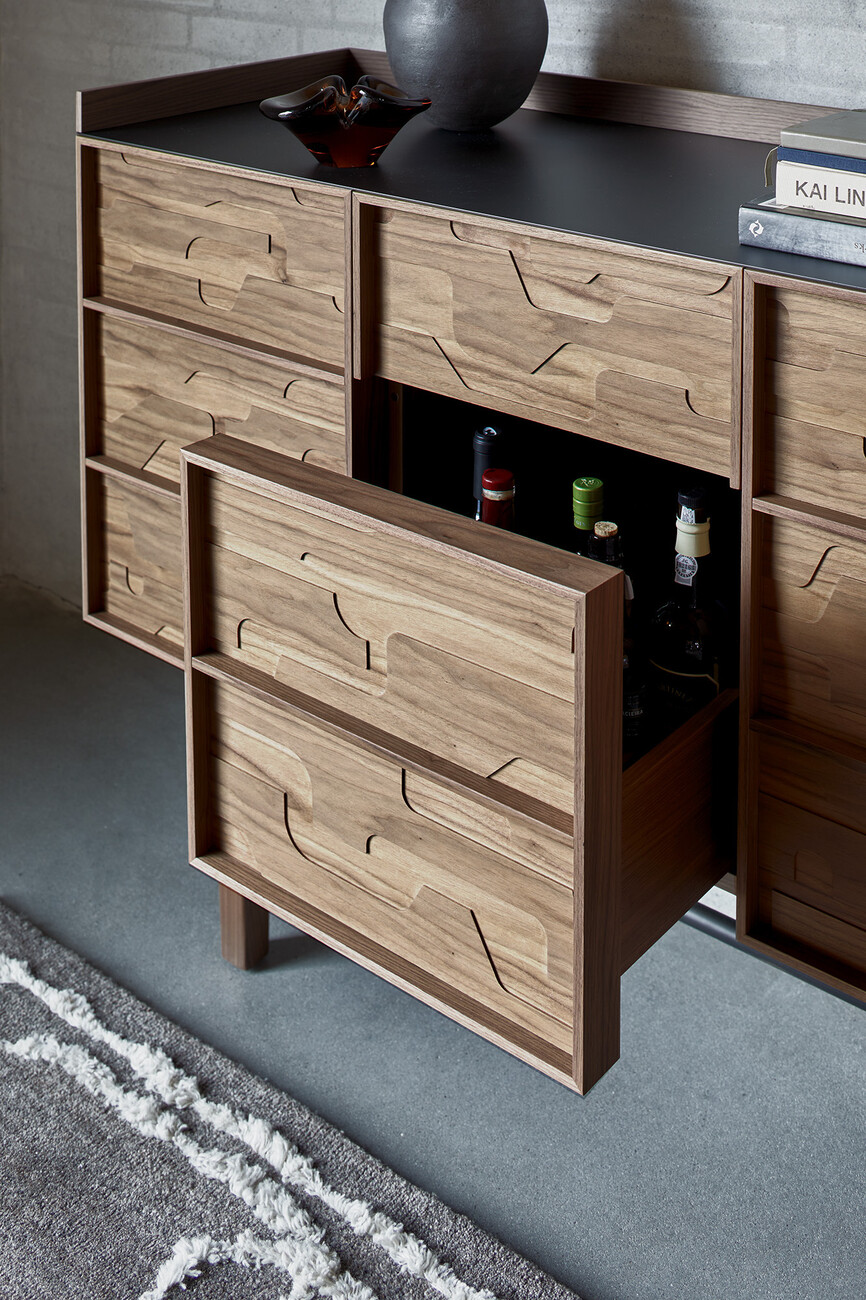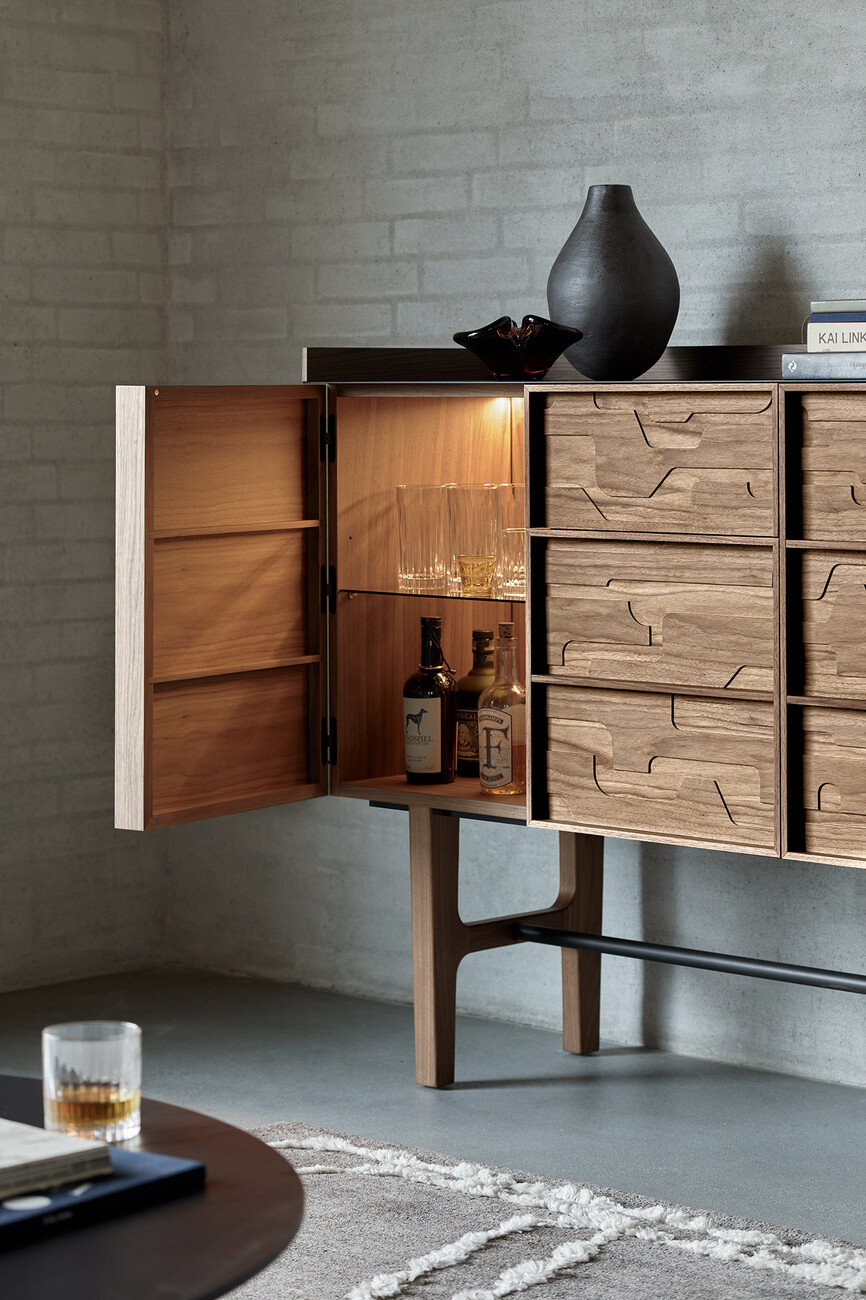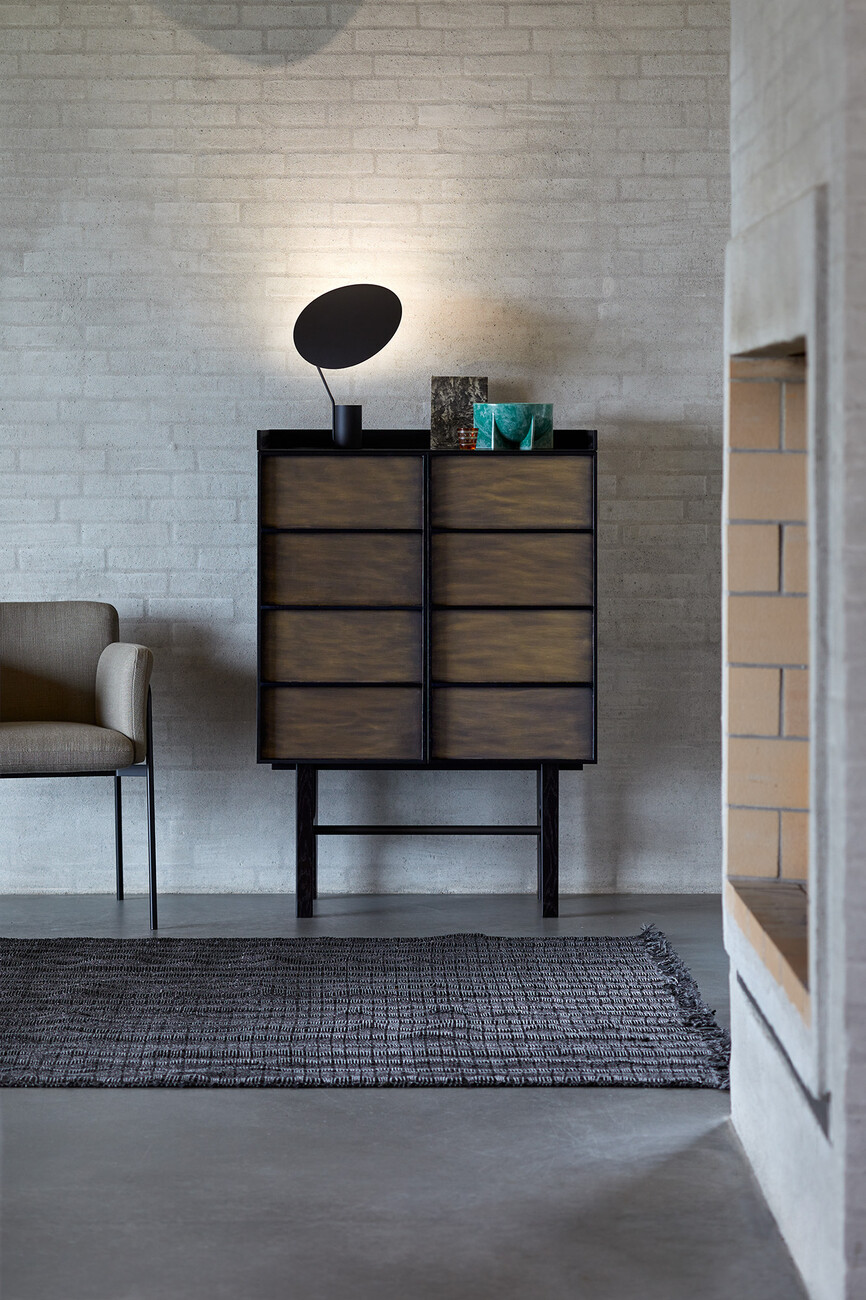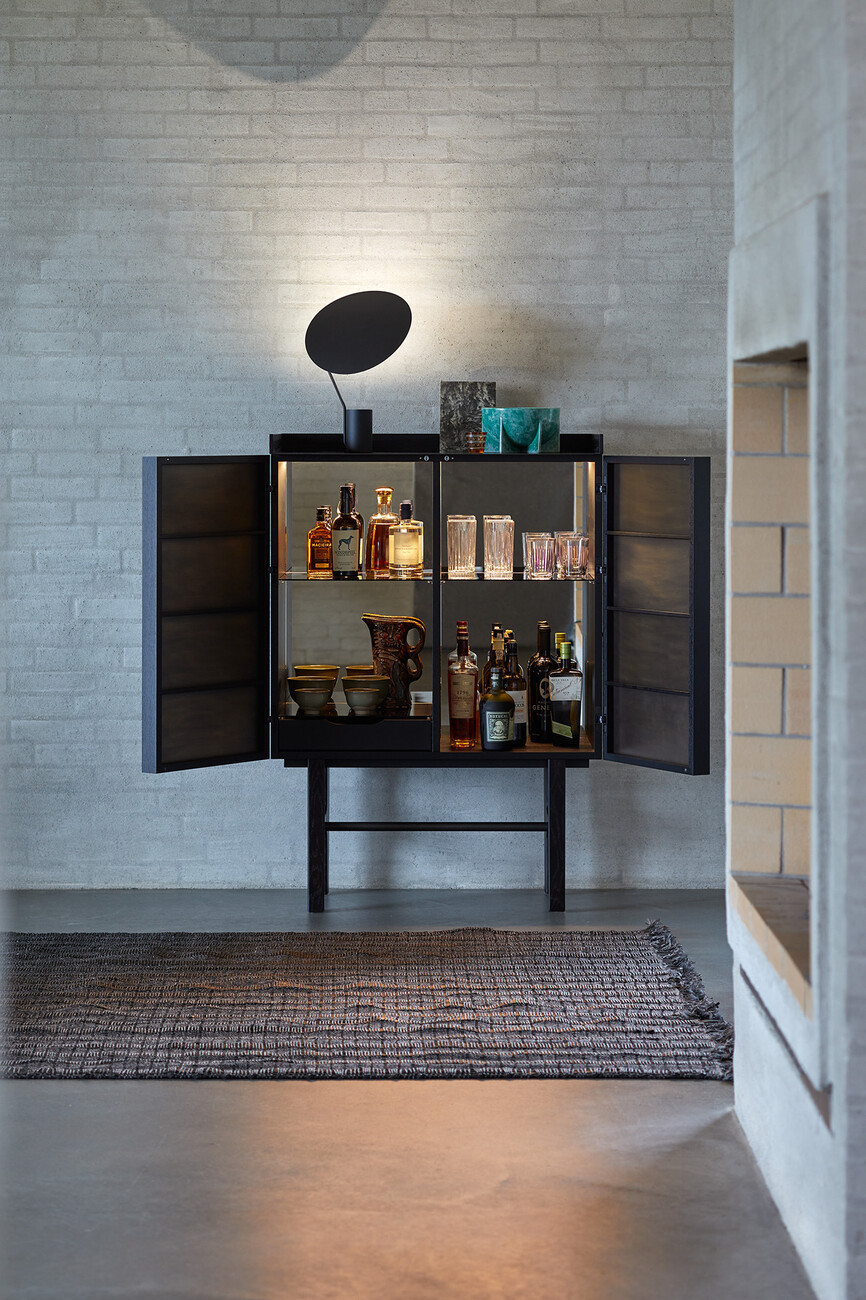A touch of Brazil
Alexander Russ: How did the new "Paulo" bar cabinet come about?
Peter Fehrentz: I designed the "Harri" bar cabinet for more a few years ago, which is still running very successfully and is also very much associated with the company. At the same time, there aren't that many manufacturers who have a modern bar cabinet in their program. After the success of "Harri", it was therefore obvious to include a second bar cabinet in the range in order to place the theme even more strongly with more – and so "Paulo" was born.
"Paulo" is inspired by the formal language of Brazilian Brutalism. Can you elaborate on that?
Peter Fehrentz: When I designed "Paulo," my initial concern was to create a certain feeling – and Brazilian Brutalism expresses this feeling quite well. By that I mean, for example, the sculptural design language of the architecture, or certain graphic elements that were used in the design of the buildings. The design of the relief on the front of "Paulo" or the legs for the body are good examples of these references. The whole thing was a playful approach to that era.
Were there concrete designs by designers or architects that served as models for "Paulo"?
Peter Fehrentz: There were no concrete examples. It was rather the overall work of famous representatives such as Oscar Niemeyer or Paulo Mendes da Rocha that influenced the design. The latter, as you may have guessed, is also the namesake of "Paulo" along with the city of São Paulo. Incidentally, this is similar to the bar cabinet "Harri", whose name is a reference to Harry's Bar in Venice.
Could you describe the design of "Paulo" in more detail?
Peter Fehrentz: The body of the bar cabinet is based on a grid. The resulting fields are then filled with reliefs. The grid keeps the design together, while the fields with the reliefs provide a certain variety. In addition, "Paulo" is available in two different versions, which is due to the fact that more thinks in series. The two bar cabinet formats in the form of a high narrow and a low deep version have already proven themselves functionally with "Harri". That's why we've adopted them for "Paulo" as well.
Both versions also have a different decor.
Peter Fehrentz: Yes, the fields in the respective versions are filled differently: The tall narrow version has a decor made of burnished brass, while the low deep version has a wood relief that is milled out of several layers of veneer. The respective decors look very different, which brings a design variety – and if more would also implement a sideboard of "Paulo", the decor would be different here, too.
How does "Paulo" differ from other bar cabinets?
Peter Fehrentz: Basically, there are two types on the market: Either they are very heavy and sedate pieces of furniture, or they are modern variants, but usually lack something. An example of this would be the mirrored back panel, which is a classic element in bar cabinets and which we have integrated in both "Harri" and "Paulo". Other examples would be the generous storage space and, of course, lighting inside. Incidentally, this also applies to a bar: if the bottles are not properly staged, then something is simply missing. So on the one hand, "Paulo" ties in with the concept of classic bar cabinets, but on the other hand it also has a modern feel.
